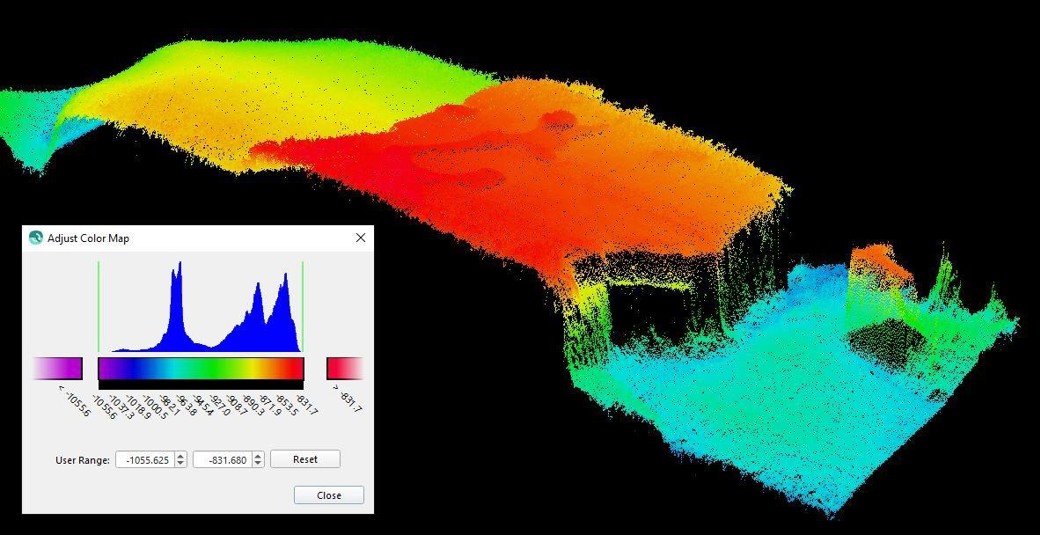
Successful first trial for the EM 304 MKII deep-water multibeam
Kongsberg Maritime's EM 304 MKII high resolution deep-water multibeam echosounder system has been successfully trialed for the first time off the coast of Florida.
The system is installed on NOAA Ship Okeanos Explorer and is an upgrade from the ship’s former EM 302 deep-water multibeam, which has seen daily operation since the vessel was originally launched in 2008. The EM 304 MKII is designed to improve the quality of the data collected and coverage achievable for seafloor mapping, thereby increasing the efficiency of deepwater mapping work. Okeanos Explorer is the first ship in the world to receive the newly improved EM 304 MKII transmit array.
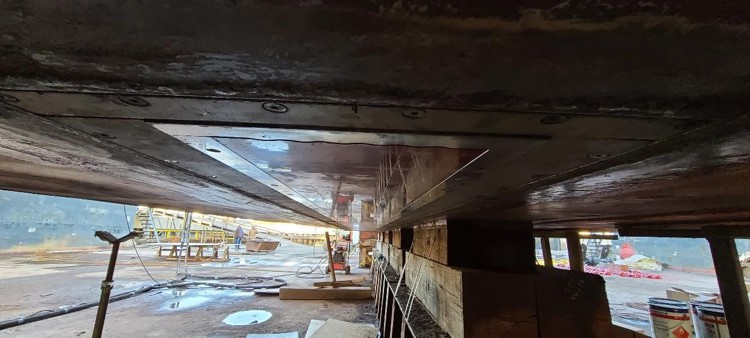
An image of the new EM 304 transducer on the underside of NOAA Ship Okeanos Explorer, looking athwartships (looking in the fore-and-aft line of the vessel, in a lengthwise direction). Image courtesy of Charlie Wilkins, David Blessing, and Michael Peperato.
“We are very pleased with the EM 304 system performance and Kongsberg technical support so far, and look forward to using this sonar to explore deep waters of the United States and beyond to continue to push the boundaries on deep-ocean mapping and to narrow the gaps of unmapped seafloor globally,” said Genene Fisher, acting director of NOAA Ocean Exploration. “The successful installation and shakedown of this new sonar is the result of a strong, long-standing, and productive relationship between NOAA Ocean Exploration, the NOAA Office of Marine and Aviation Operations, and Kongsberg Maritime. With this new system, in 2022, we are poised to pass the milestone of having mapped a total of two million square kilometers via Okeanos Explorer. We look forward to sharing our experiences with integrating this new system with the global seafloor mapping community.”
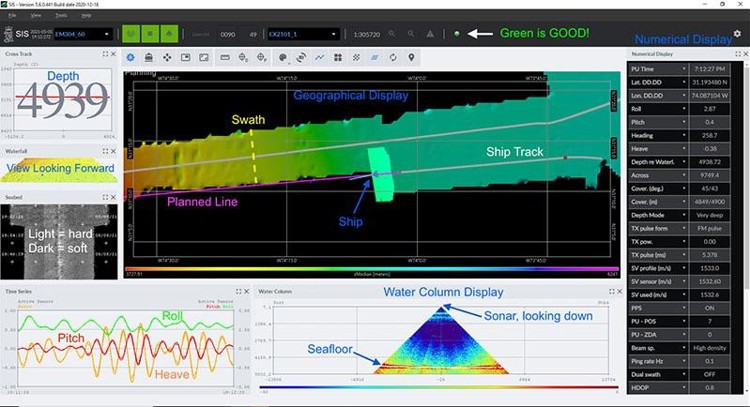
Screenshot of SIS5, the multibeam data acquisition software, while the ship was underway and collecting data with the new multibeam system. Image courtesy of NOAA Ocean Exploration.
NOAA Ocean Exploration completed a 25-day expedition on Okeanos Explorer where the team assessed the functionality and readiness of all mapping-related equipment prior to the start of the rest of the field season, including the official acceptance of the new EM 304 MKII system. This enables the team to efficiently plan and execute surveys, ensuring the best use of the vessel’s time, predicting accurate coverage for a given survey area, and ensuring the highest quality of data collected and shared with the community.
While Kongsberg Maritime’s multibeam systems have long been renowned for their ability to produce extremely clean data right across the entire swath width, the EM 304 MKII takes this a step further. The new EM platform is designed for future challenges and uses the new datagram format, supporting several new features such as extended backscatter calibration, with more features already in development.
Images from sailing
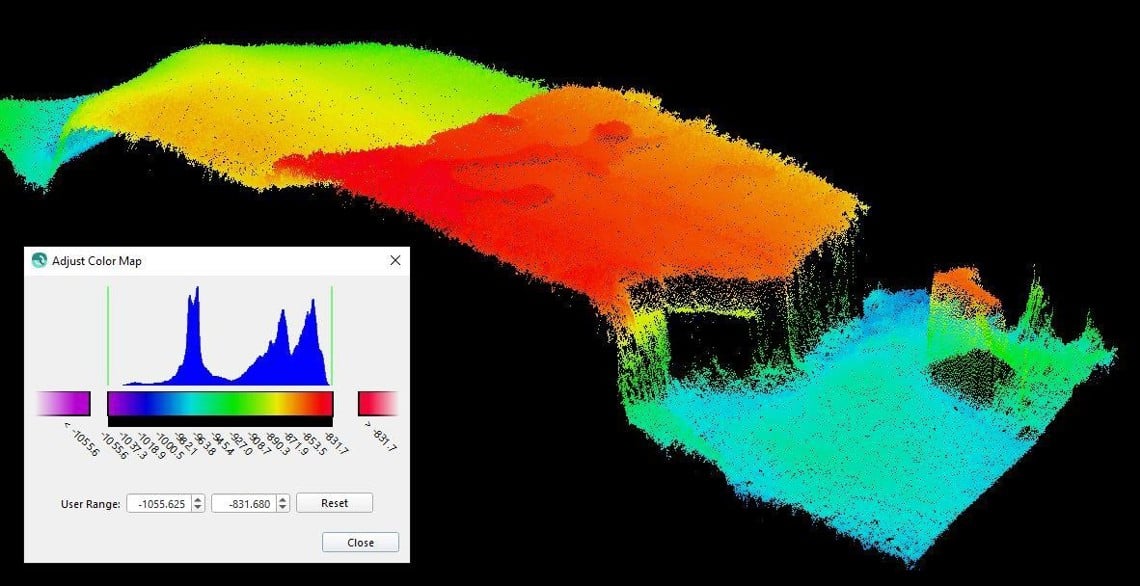
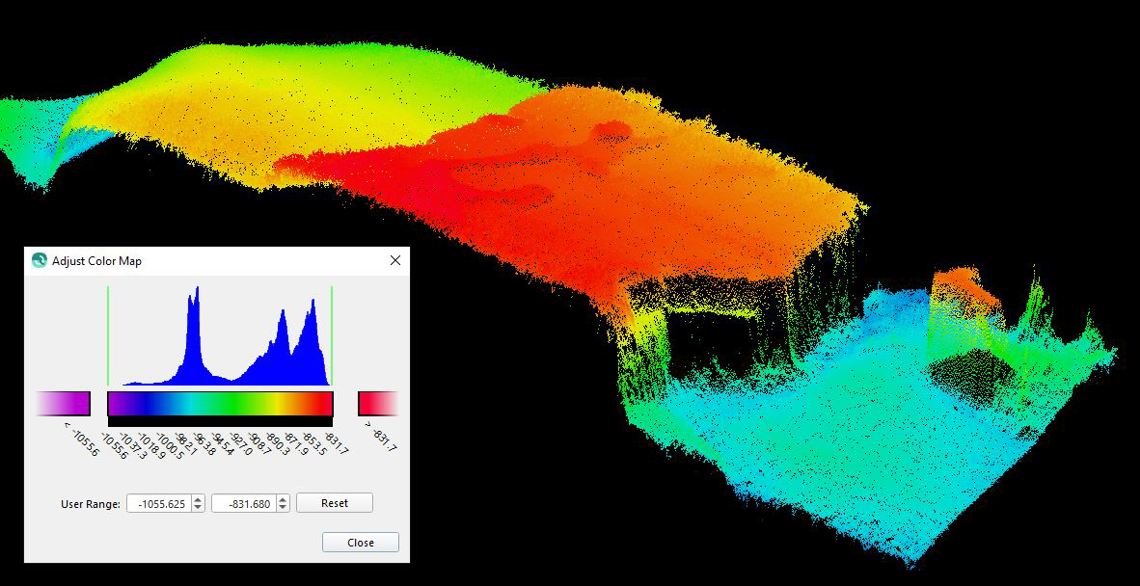
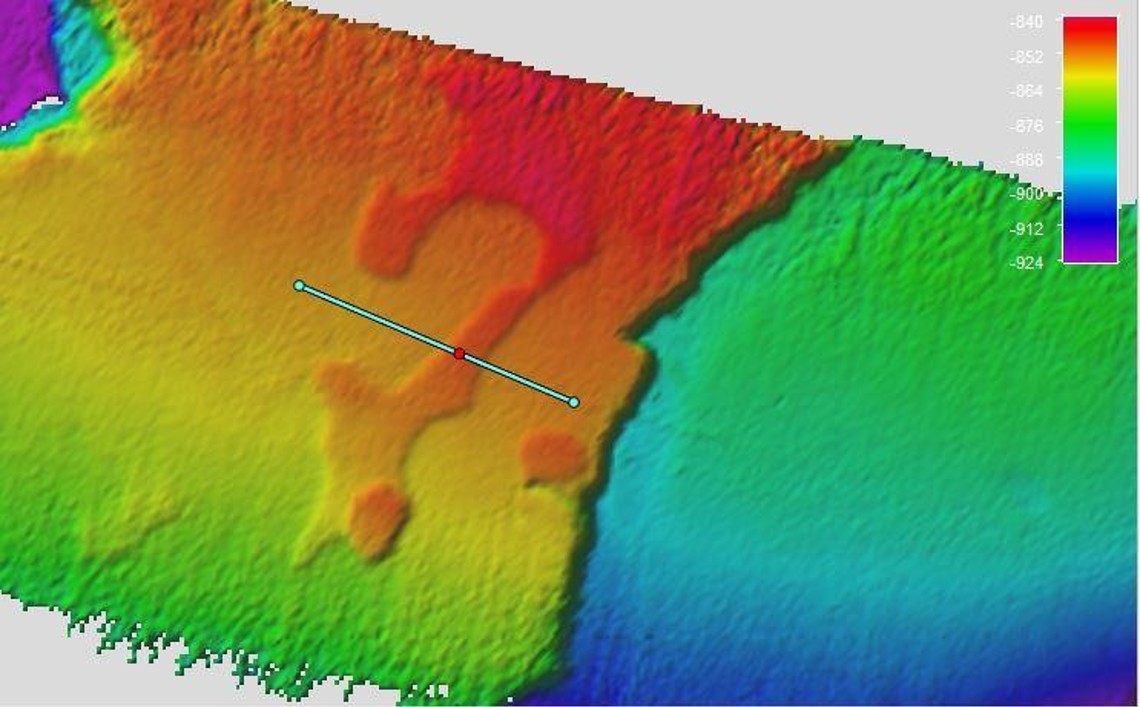
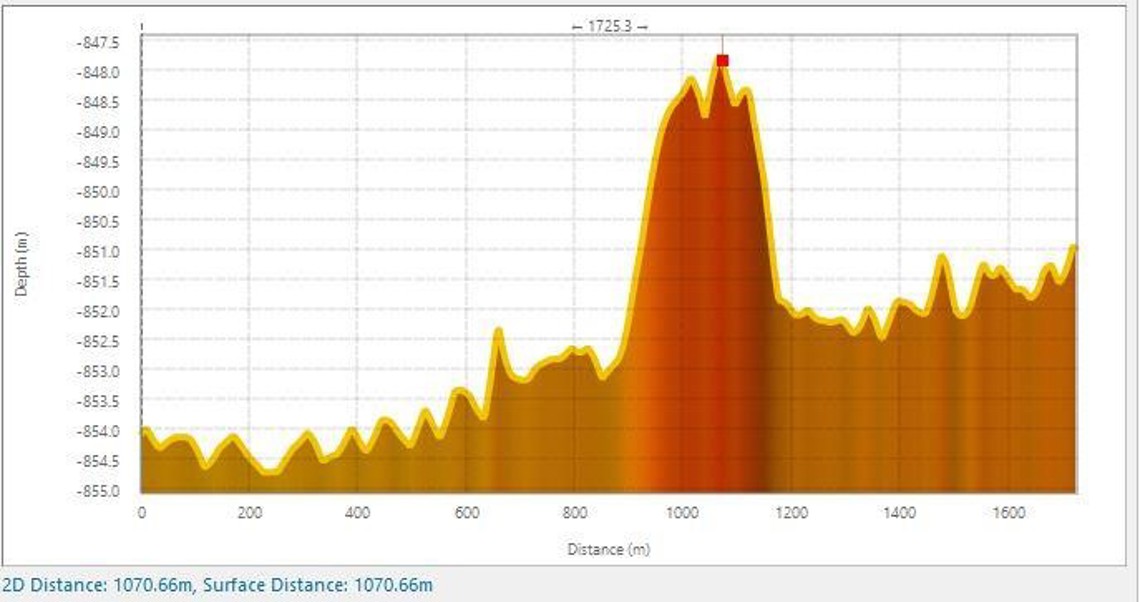
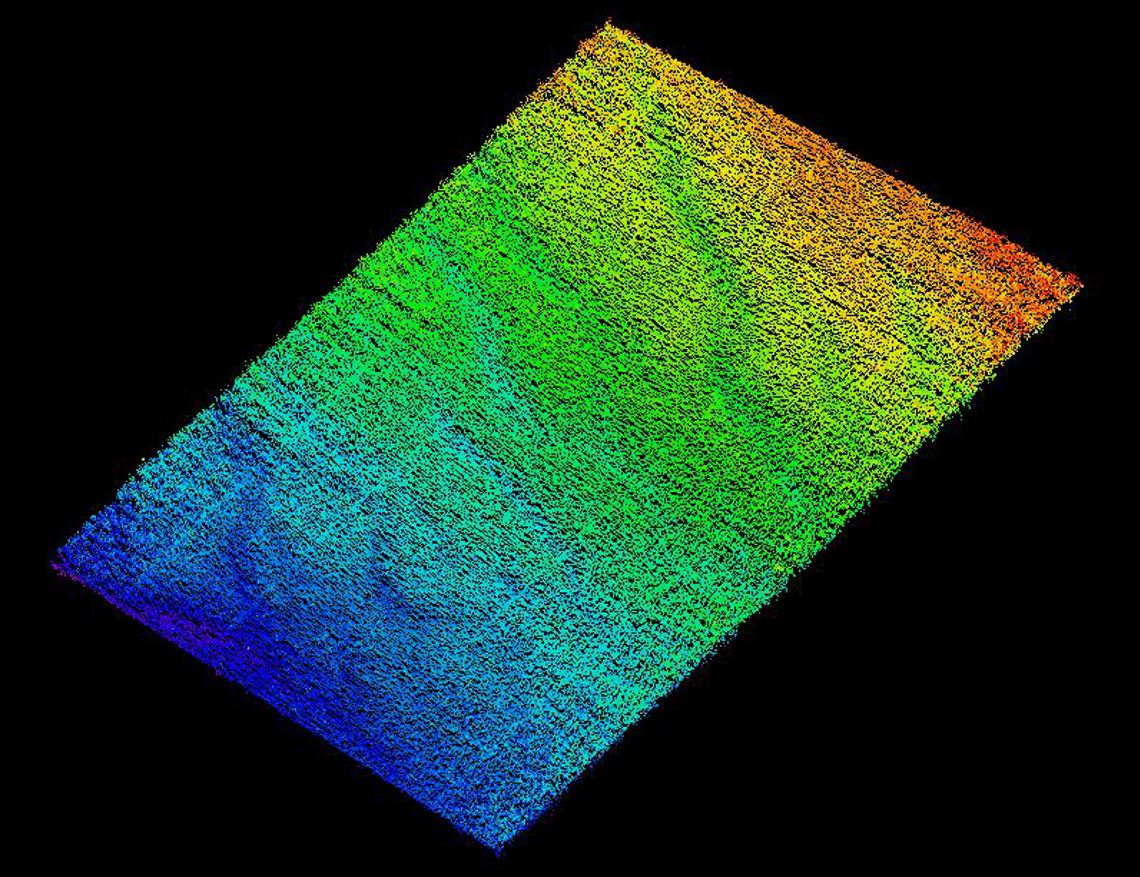
“I am very pleased to be working with NOAA on the first sea trial of the new MKII and excited that the new system meets all expectations by NOAA and KM. I look forward to seeing new and interesting areas mapped by NOAA Ocean Exploration via Okeanos Explorer and the EM 304 MKII,” comments Helge Uhlen, VP Underwater Mapping Sales. “The new system is truly remarkable with a long range, but yet high resolution, an important step towards revealing the secrets of the deep blue in a much greater detail than ever done before.”
Like all KONGSBERG EM multibeam echo sounders, the EM 304 MKII ensures the best operating environment to safeguard marine life inhabiting the survey area through decreased emitted sound levels.